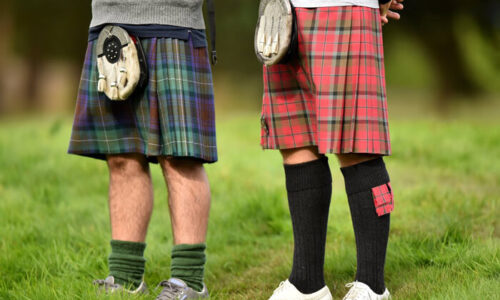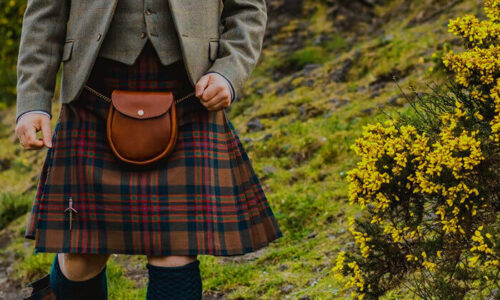Did you know that Tartan Day is April 6th? Tartan Day, which marks the anniversary of the signing of Declaration of Arbroath is a celebration of Scottish heritage. It is observed worldwide. This blog post will celebrate the occasion by exploring the history and evolution of tartan, from Roman Britain to the present day.
What is tartan?
Tartan, also known as “plaid” in the US (a term derived from the Gaelic word meaning blanket), is a patterned fabric that’s made up of interlocking colors. These stripes run both up and down as well as to the left and right. Also called a sett. This term can also be used to describe the representation of this type of checked pattern in other media.
Is tartan made in Scotland?
Tartan fabric is often associated with Scottish heritage. However, tartan-style fabrics have been found all over the globe, including in archaeological sites in central Europe and, most intriguingly, in the mummy a man whose DNA was European in a Bronze Age tomb located in western China. This suggests ancient trade routes and ties between east & west.
The 3rd century AD saw the discovery of tartan fabric in Britain’s earliest form. It was found in Falkirk in Stirlingshire. It features a simple check design that is believed to have been created by the British native peoples. The fabric was placed in the mouth of a pot with over 2,000 Roman coins, and then buried around 230 AD.
Checkout: What Is A Kilt And Do Irish Wear Kilts?
What was the first time tartans were associated with particular clans?
In the fabric’s history, the connection of tartans with specific clans or families is relatively new. This is evident in the Highland dress of the seventeenth century. All tartan is hand-woven using natural dyes and all patterns are interchangeable with other weavers. Highlanders often combined several tartan patterns into their dresses.
Tartan cloth was closely associated with Highland culture by the 18th century. By the middle of the 1700s, it was so closely tied to the Jacobite cause, that the British government, following the Battle of Culloden (1746), banned tartan from the Act of Proscription. Only the Highland regiments of the British army were allowed to wear tartan.
In 1782, the Act was repealed. By then, the knowledge and skills of a whole generation of weavers was largely gone and large-scale tartan production was taken over by commercial weavers like William Wilson & Sons. Wilson was the sole supplier of tartan for the British Highland regiments from 1810-1820. He sought out samples of Highland cloth and eventually gathered over 200 patterns, which are now kept in the Mitchell Library in Glasgow. Each pattern was initially assigned a number in order to distinguish it from other patterns. However, Wilson & Sons started to give them names, including those of towns and places or Highland clans.
This may have been the reason that individuals began to believe that tartans represented specific clans. In 1822, George IV visited Edinburgh (the first reigning monarch to visit the city in more than 170 years). It was suggested that clan chiefs participate in Sir Walter Scott’s festivities to wear their ‘proper’ tartan. This led some to rush to invent them. A number of books on tartans were published after the visit. This led to a ‘tartan obsession’ which was further fueled by Queen Victoria’s enthusiasm for the fabric.
See here: How To Make Kilt | A Beginners-Friendly Guide
Despite the royal approval tartan has not lost its rebellious appeal and has been adopted around the world by Punk and youth counter cultures, as well as fashion designers like Alexander McQueen and Vivienne Westwood. All patterns must be registered at the Scottish Register of Tartans, Edinburgh. The patterns are not only named after individual clans but also for countries like Jamaica and Hello Kitty. This demonstrates the timeless appeal of this old fabric.




